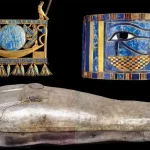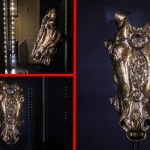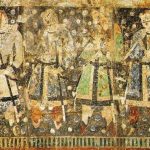Ancient relic sparks awe and wonder.
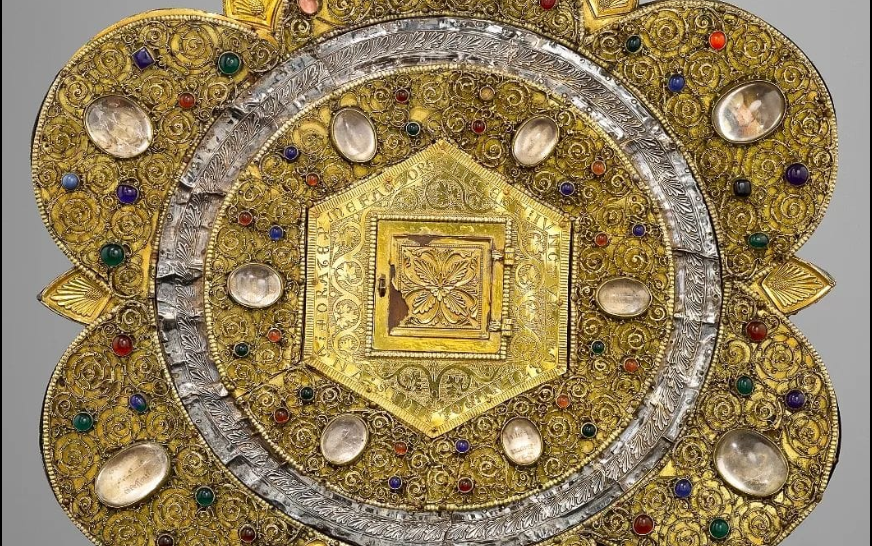
The Philactery of Saint Martin, crafted circa 1230 by Hugo D’Oignes and his workshop, stands as a testament to the exquisite artistry and religious devotion of the medieval era. This remarkable reliquary, housed today in the Musee Provincial de Namur, Belgium, exemplifies the intricate blend of materials and techniques used by medieval artisans to create objects of profound spiritual significance.
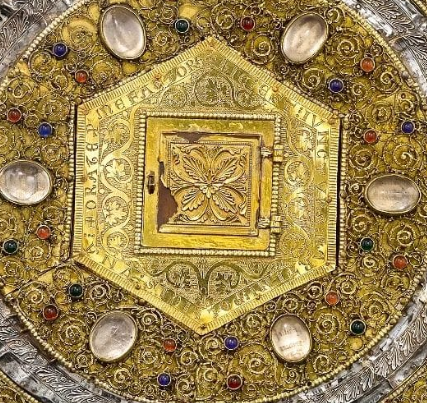
A philactery, in medieval Christian tradition, served as a container for relics of saints and martyrs, believed to possess miraculous powers and divine protection. The Philactery of Saint Martin is no exception, designed to safeguard and honor relics associated with Saint Martin, a revered figure in Christianity known for his compassion and acts of charity.
The craftsmanship of the Philactery of Saint Martin is nothing short of extraordinary. Constructed primarily from wood overlaid with gold and silver, embellished with rock crystal, precious stones, and parchment, it reflects the wealth and piety of the patrons who commissioned its creation. The intricate filigree work, delicate engraving, and skillful setting of gemstones attest to the mastery of medieval goldsmiths and lapidaries, who labored meticulously to bring religious devotion to life in material form.
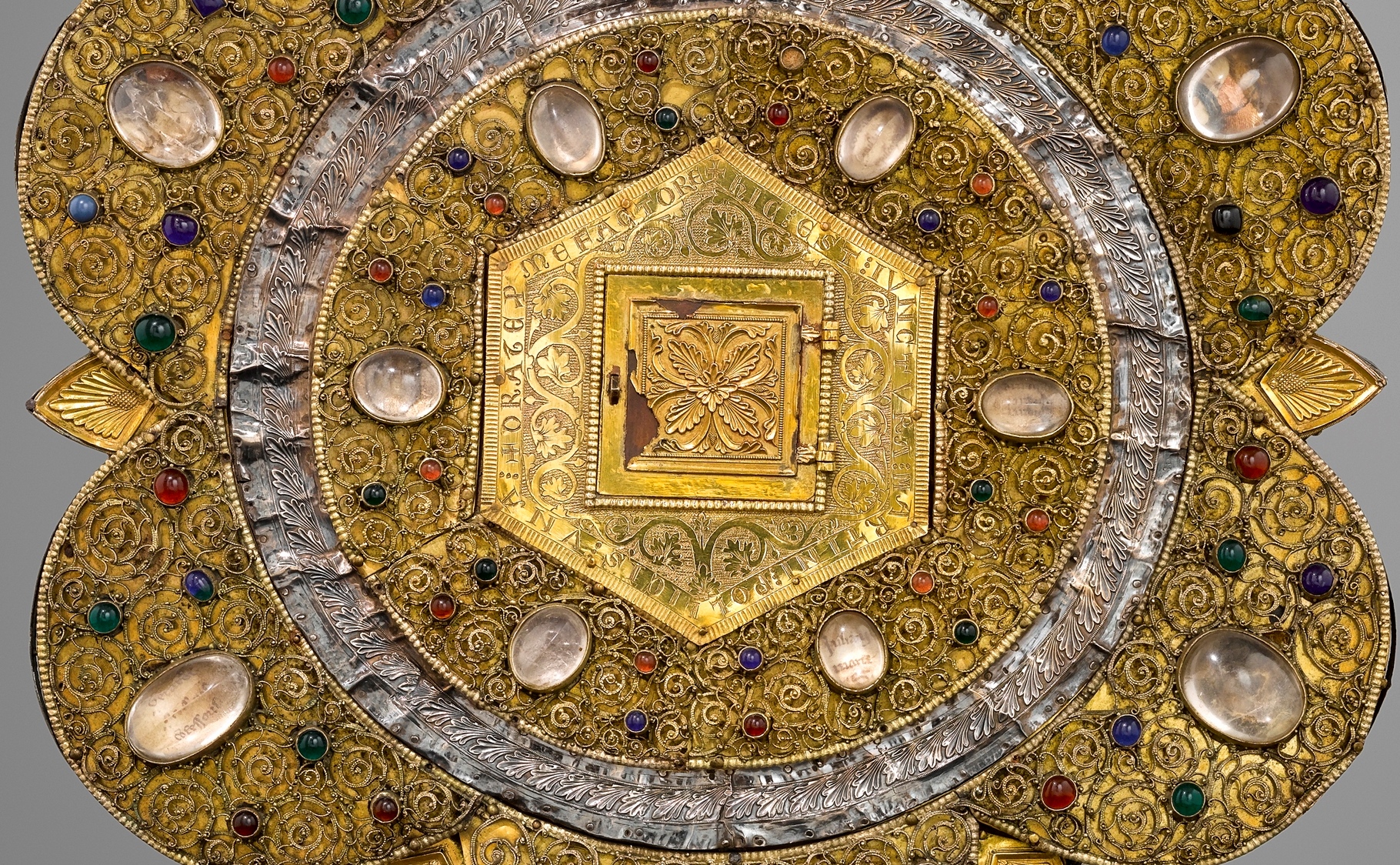
Central to the design of the Philactery is its function as a wearable reliquary. Intended to be worn around the neck or suspended from a chain, it allowed medieval worshippers to carry the sacred relics of Saint Martin close to their hearts. This proximity was believed to confer spiritual protection and blessings upon the wearer, fostering a profound sense of connection to the saint and the divine.
The significance of the Philactery of Saint Martin extends beyond its exquisite craftsmanship. It embodies the intersection of faith, art, and material culture in medieval Europe, serving as a tangible link between the earthly realm and the heavenly divine. Its presence in the Musee Provincial de Namur not only preserves its historical and religious importance but also invites contemplation of the medieval worldview and the enduring power of relics in shaping religious practices and beliefs.
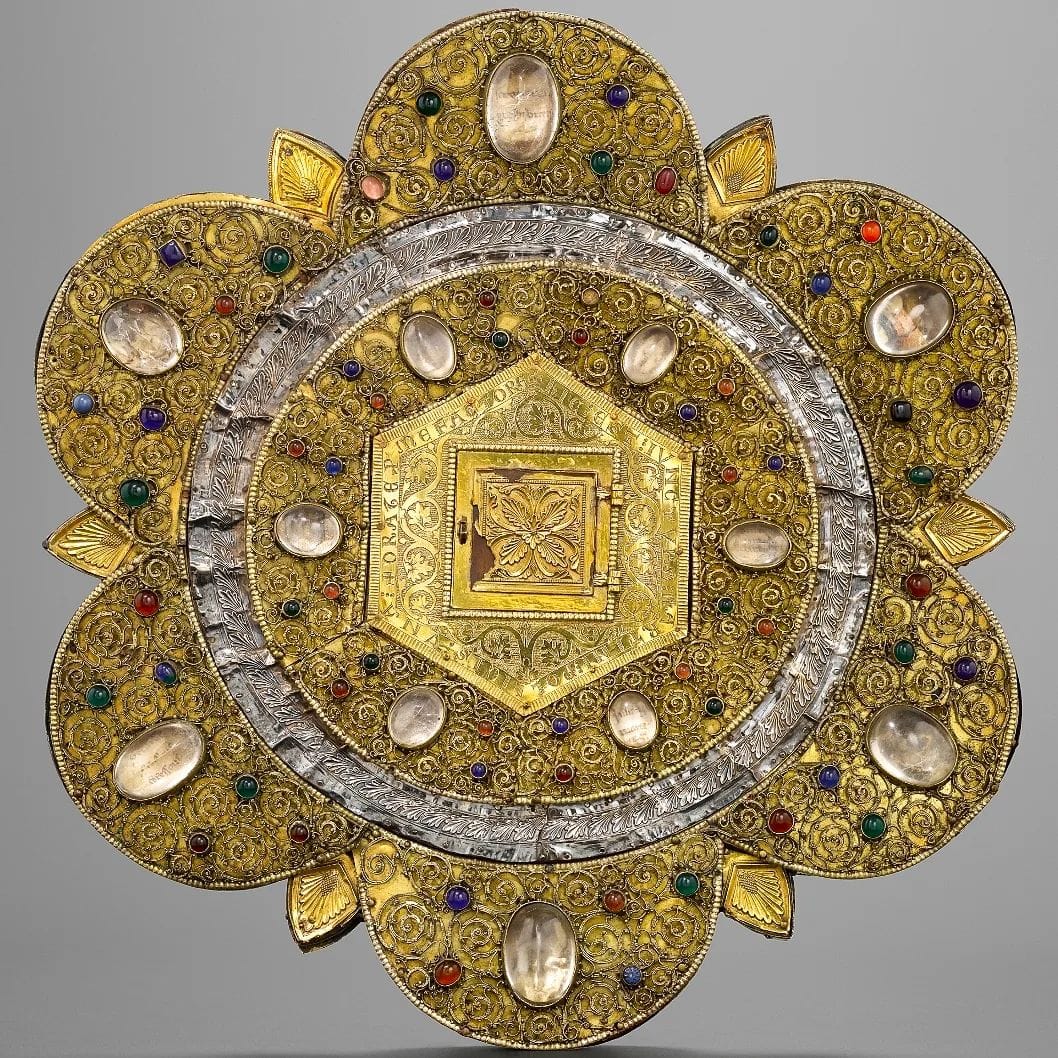
Moreover, the Philactery of Saint Martin speaks to the broader context of medieval religious life and devotion. During the Middle Ages, reliquaries like this one played a crucial role in the religious rituals and piety of communities across Europe, serving as focal points of veneration and pilgrimage. They encapsulated the spiritual aspirations and communal identity of medieval society, offering tangible manifestations of faith and divine intervention.
In conclusion, the Philactery of Saint Martin stands as a shining example of medieval artistry and religious devotion. Its meticulous craftsmanship, rich symbolism, and historical significance illuminate the cultural and spiritual landscape of the Middle Ages, inviting admiration and contemplation from scholars, pilgrims, and visitors alike. As we marvel at its beauty and intricacy today, we are reminded of the enduring legacy of medieval craftsmanship and the enduring allure of relics in the Christian tradition.
